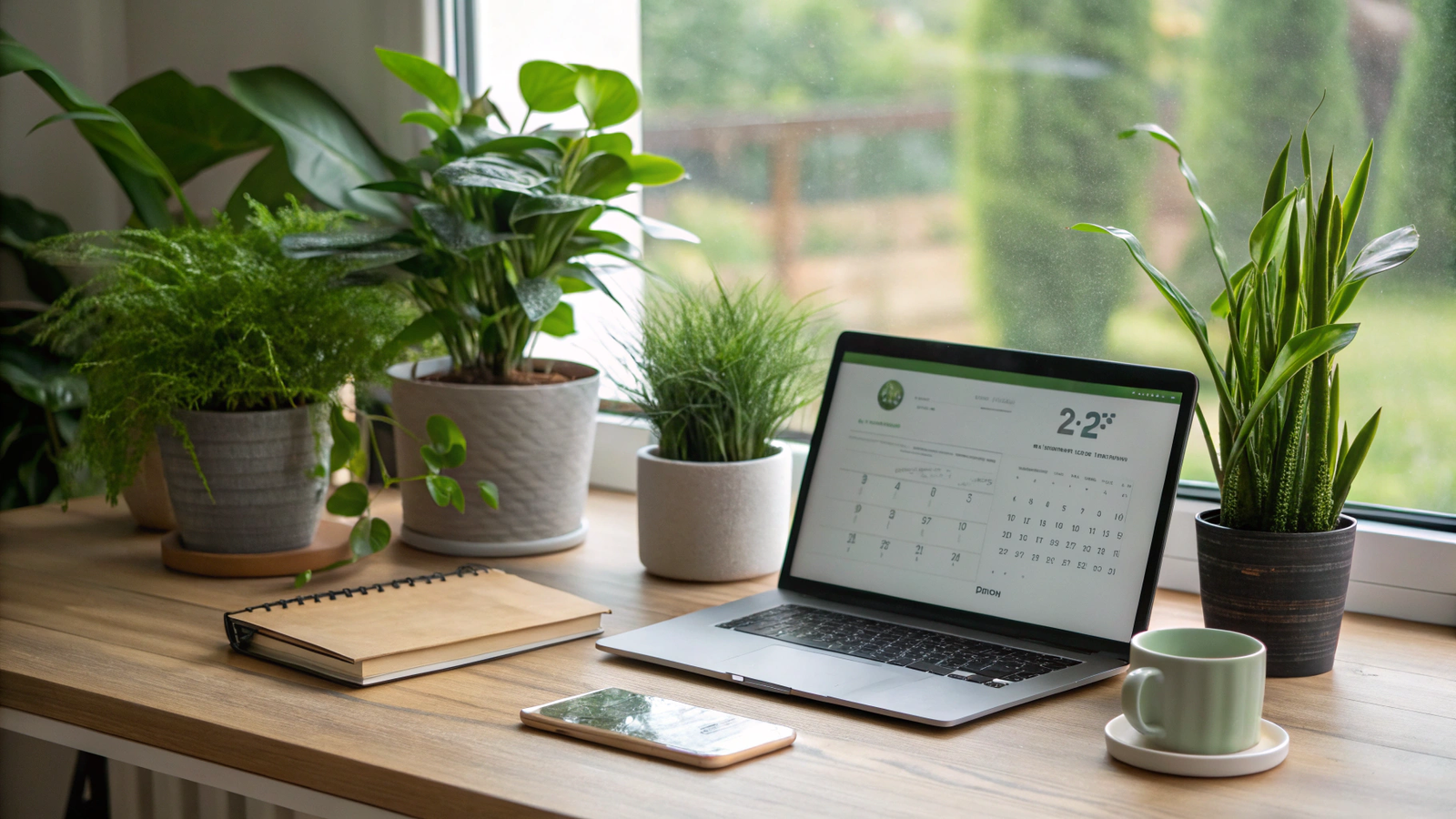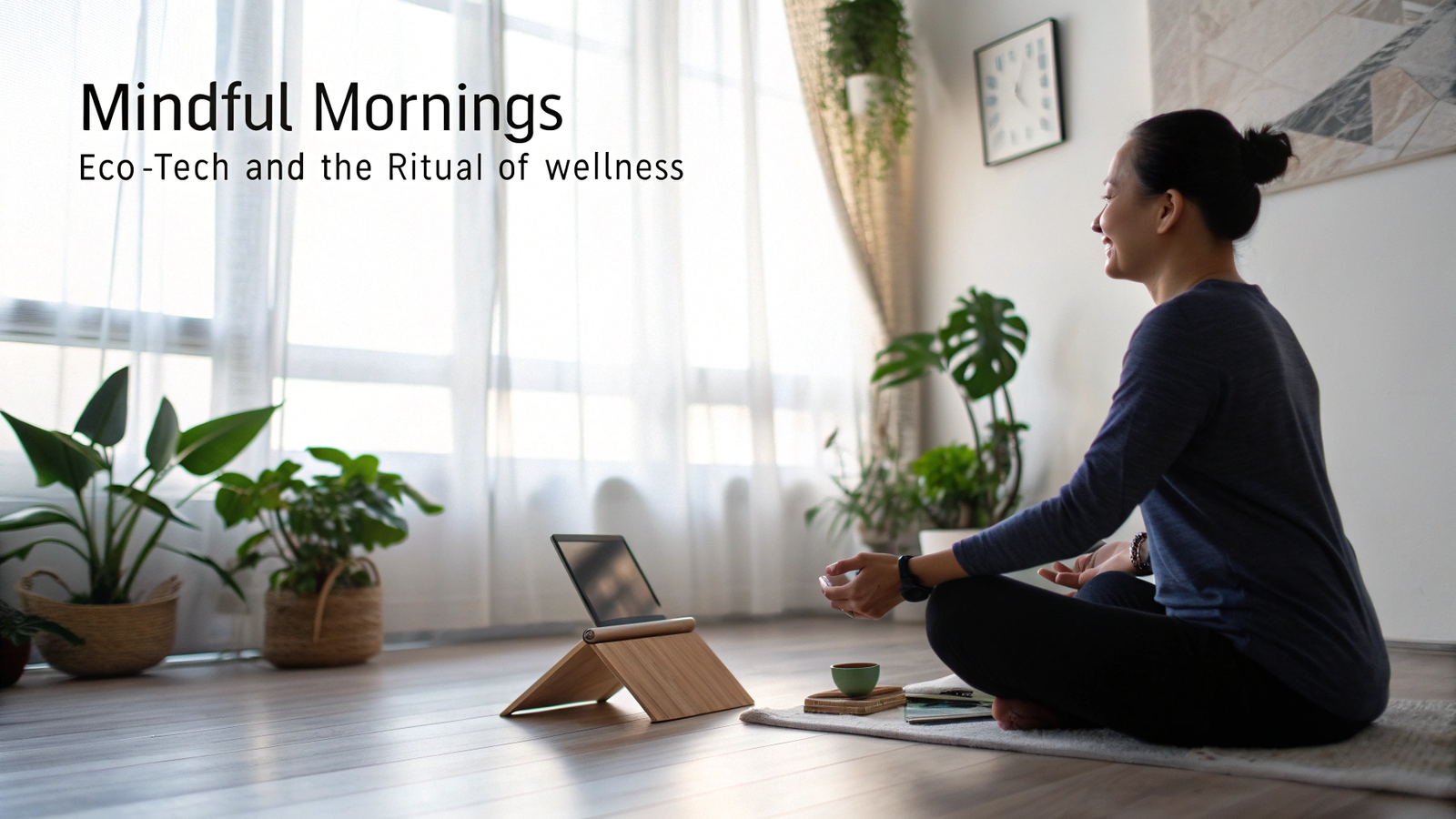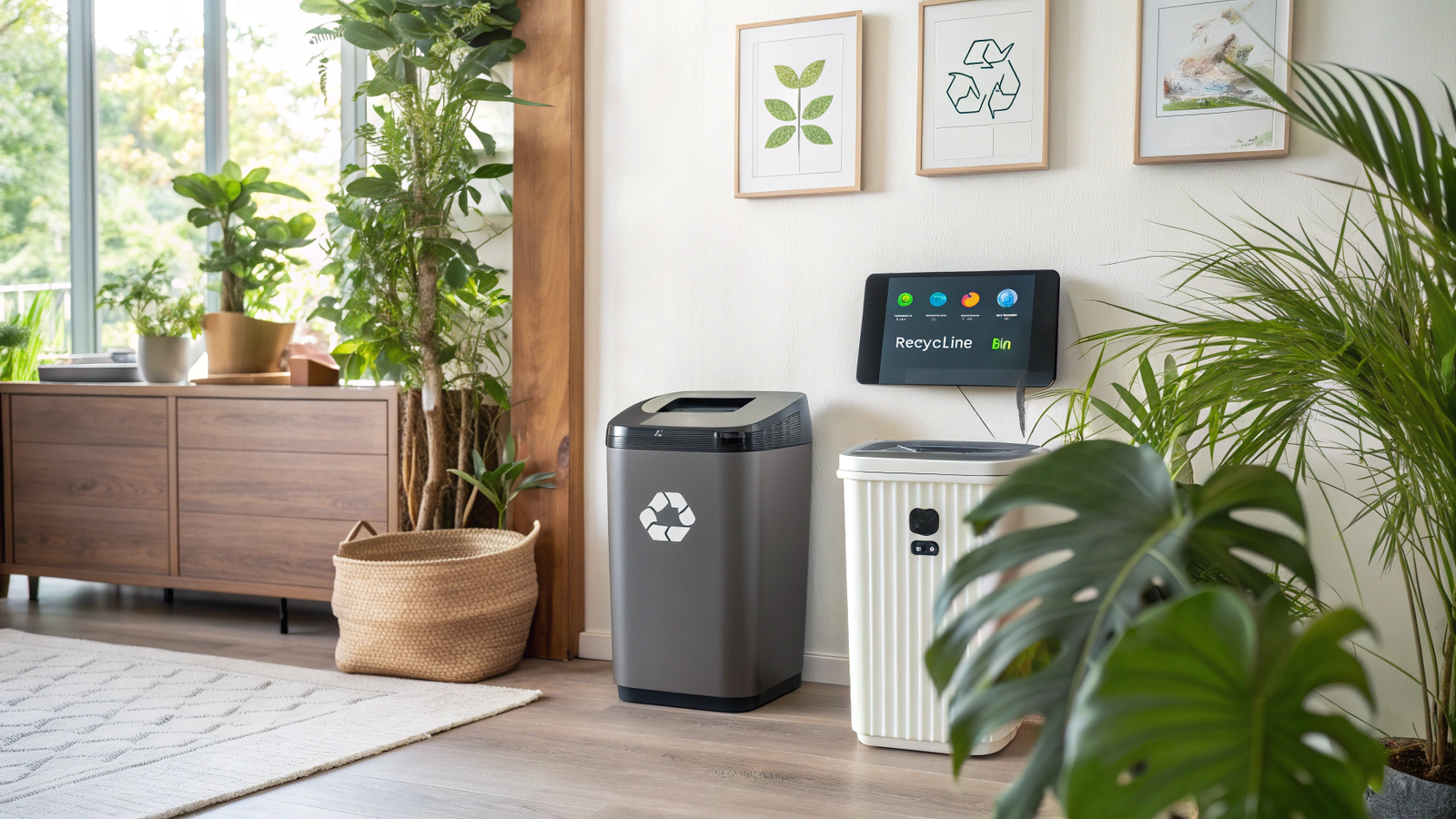
From Routine to Ritual: Tech-Enabled Eco-Conscious Living
In our modern world, technology has become interwoven into the fabric of our daily lives. From the moment we wake up to the moment we go to sleep, our routines are peppered with digital interactions. Smart alarms, weather apps, electric toothbrushes, fitness trackers, streaming platforms, and virtual assistants fill our days. While these routines offer efficiency and convenience, they also raise a critical question: Are our tech-driven habits serving the planet as well as they serve us?
This article explores how we can evolve everyday routines into rituals of eco-conscious living by intentionally leveraging technology. It’s about transforming passive consumption into meaningful action. When tech becomes a conscious tool for sustainability, it turns mundane routines into purpose-driven behaviors—rituals that not only shape our lives but also steward the environment.
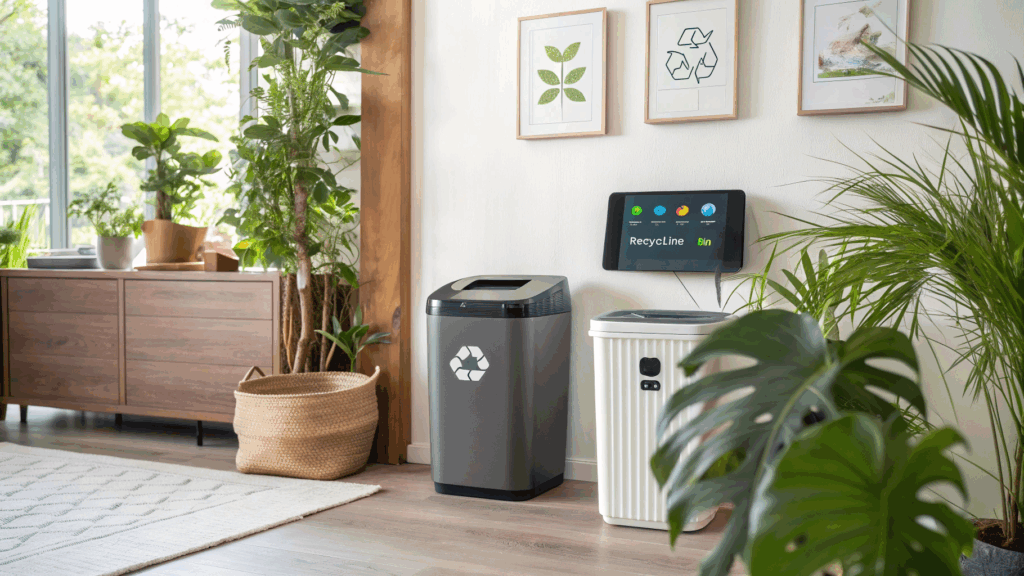
1. Redefining Routine: The Power of Intention in a Tech World
A routine is something we do automatically. A ritual is something we do deliberately and mindfully. The difference lies in intention. When we bring awareness into how we use technology, we begin to unlock its potential to not just serve our lives—but also the planet.
We’re already surrounded by the tools needed to make this shift: smart thermostats, digital reminders, eco-friendly apps, and devices that help us monitor and reduce our consumption. The key is to integrate them not just into our schedules, but into our values.
2. Waking Up: Mindful Mornings with Purpose
a. Smart Alarms and Energy Monitoring
Instead of jarring alarms that throw us into the day, many people now use smart alarms that sync with their sleep cycles and lights that mimic the sunrise. These devices consume minimal power, especially when connected to energy-efficient lighting.
By pairing a smart home hub with a solar-powered alarm system, waking up becomes a ritual of starting the day in harmony with nature.
b. Low-Impact Coffee and Breakfast
Using an energy-efficient electric kettle (some connected to apps) and selecting fair-trade coffee or plant-based breakfast options are small but meaningful acts. A tech-enabled coffee maker with scheduling features ensures no energy is wasted on idle appliances.
Apps like Too Good To Go or OLIO can help reduce food waste by sourcing near-expiry groceries or leftover café items, turning breakfast into an act of sustainability.
3. The Commute: Green Transportation with Digital Support
a. Smart Navigation and Public Transit Apps
Transportation contributes to around 24% of global CO₂ emissions. Transitioning from personal gas-powered vehicles to biking, walking, or public transport is one of the most impactful shifts in daily life.
Apps like Citymapper, Transit, and Google Maps Eco Routes help optimize travel with the lowest carbon footprint. If you must drive, using apps to plan carpooling (like BlaBlaCar or Waze Carpool) transforms your commute into a lower-emissions activity.
b. E-Bikes and Electric Vehicles
Charging an e-bike at home powered by solar panels or using public EV charging networks can make a significant difference. Many e-mobility platforms also track your carbon savings, turning travel from routine into ritual by making impact visible.
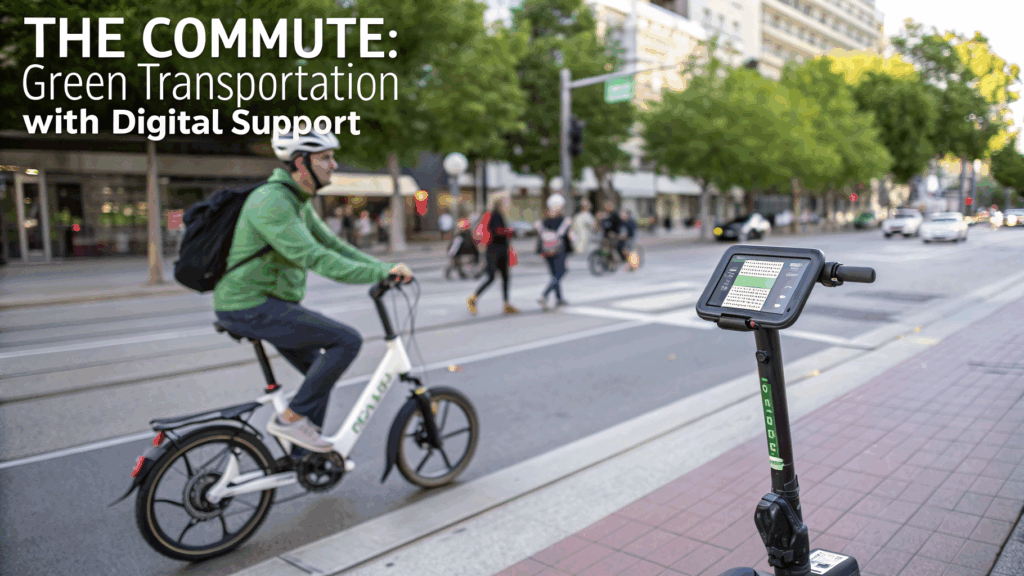
4. Working Smart: Sustainable Productivity in a Digital World
a. Cloud Consciousness
Remote work has reduced commuting emissions but increased energy use at home and in data centers. Being mindful of your digital footprint is now a daily ritual.
Use low-energy browsers (like Ecosia, which plants trees with ad revenue) and green cloud storage solutions. Delete redundant emails and files, and reduce bandwidth-heavy video meetings when audio or text will do.
b. Eco-Friendly Workspaces
Smart power strips, LED task lighting, and smart plugs can help manage your workspace’s energy consumption. Ritualizing a morning check-in to power on only essential devices—and a wrap-up ritual to power them off—adds rhythm and responsibility to the workday.
5. Tech-Driven Conscious Consumption
a. Smart Shopping with Ethical Intent
Online shopping is convenient, but it often comes with high packaging waste and carbon emissions from fast shipping.
Apps and browser extensions like:
- DoneGood (for ethical alternatives),
- Ethical Consumer (for product sustainability scores),
- Bimpact (for companies certified as B Corps),
can turn impulse buying into conscious consumer rituals.
b. Digital Decluttering
Subscription management apps (e.g., Truebill, Bobby) can help you identify digital waste—unused streaming, software, or delivery services—and eliminate them. Each cancellation is a small but powerful ritual of financial and environmental clarity.
6. Smart Homes, Smarter Living
a. Energy Management as Ritual
A smart home can be a powerful ally in sustainable living if used intentionally. Instead of simply automating comfort, focus on optimizing efficiency:
- Smart thermostats like Nest or Ecobee adjust based on usage patterns and weather data.
- Smart plugs allow remote powering down of appliances during work hours or vacation.
- Energy monitoring systems (e.g., Sense, Emporia) provide real-time feedback on consumption, encouraging daily review rituals that reinforce awareness.
b. Water Conservation Tech
Greywater recycling systems, smart irrigation apps (e.g., Rachio), and water-usage sensors help minimize waste. Morning or evening check-ins with these apps can become sustainability rituals, where you’re actively nurturing both your plants and the planet.

7. Health and Wellness: Digital Tools for a Greener Body and Mind
a. Eco-Tracking Wearables
Wearables like Fitbit, Garmin, or Apple Watch can track steps and encourage biking or walking instead of driving. They can also monitor air quality, encouraging outdoor activities during low-pollution periods—merging personal health with environmental stewardship.
b. Meditation and Mindfulness Apps
Platforms like Headspace and Insight Timer increasingly offer eco-themed sessions—meditations that connect users with nature and inspire sustainable action. Making morning or bedtime meditation a daily ritual grounds the day in mindful intention.
8. Evening Rituals: Winding Down with Sustainability in Mind
a. Conscious Energy Usage
A nightly ritual of checking and reducing household energy use (via a smart home dashboard) can dramatically lower emissions. Set devices to power-saving mode, turn off phantom loads using smart strips, and automate nighttime lighting with timers.
b. Tech-Free Time
Creating tech-free zones or hours in the evening helps both the environment and personal wellbeing. Less screen time equals lower energy use and better sleep quality. Apps like Forest or Digital Wellbeing can help form digital boundaries and support more intentional routines.
9. Waste Not: Recycling and Circular Living with Tech
a. Digital Recycling Tools
Apps like iRecycle, RecycleCoach, and Bin Day provide localized recycling guidance, reminders, and tips. Making recycling decisions part of a tech-supported routine builds sustainable habits into the fabric of daily life.
b. Circular Economy Platforms
Tech-enabled platforms are helping users embrace reuse:
- Buy Nothing apps for sharing goods locally,
- Facebook Marketplace for secondhand purchases,
- ThredUp and Depop for sustainable fashion exchanges.
These tools ritualize the act of reducing waste and giving items a second life.
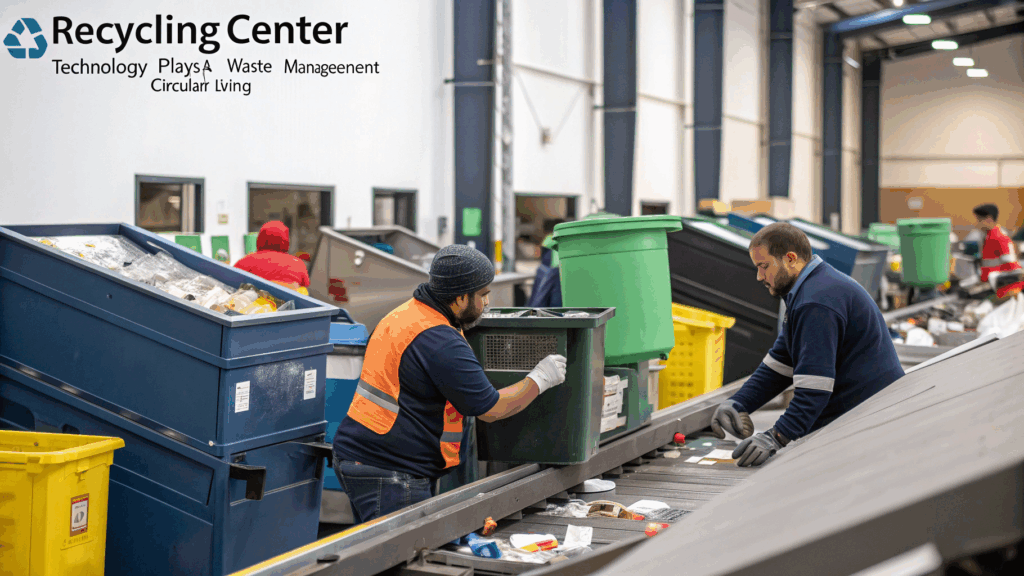
10. Community Engagement and Data-Driven Activism
a. Eco-Challenges and Digital Communities
Apps like JouleBug, Earth Hero, and AWorld turn sustainable living into gamified daily challenges. These platforms create community rituals of shared progress, reflection, and reward.
Sharing your journey through social media or apps dedicated to sustainability multiplies impact and turns solitary habits into communal rituals.
b. Track, Reflect, Repeat
Digital carbon trackers such as Capture or CarbonKit let users see the impact of their choices in real-time. Weekly reflections, journaling in eco-apps, or reviewing your environmental impact data can help turn sustainability into a meaningful practice—not just a trend.
11. Children, Education, and Next-Gen Rituals
Instilling eco-awareness in children is easier when tech is used wisely. Apps, games, and smart toys like Toca Nature, Gro Garden, or Goodness Shapes teach environmental values in playful, engaging ways.
Families can create rituals around eco-themed storytime, digital cleanup days, or learning challenges that turn environmental consciousness into an integral part of upbringing.
12. Toward a Life of Tech-Enabled Ecological Harmony
The idea of ritual often evokes spirituality or tradition. In this context, it means intentionality, repetition, and reflection. It’s about being present in your daily actions and understanding their impact beyond personal convenience.
With technology, we have the tools to live more sustainably—but tools alone are not enough. It’s how we use them that matters. By embedding sustainability into our routines and elevating them to rituals, we cultivate a more mindful, connected, and responsible way of living.

Conclusion: Living the Future Now
Tech-enabled eco-conscious living is not some far-off concept. It’s already here, in your pocket, on your wrist, and in your home. What matters now is how you choose to engage with it.
